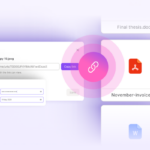Organizations vulnerable to software supply chain attacks

According to Gartner, 60 percent of organizations work with over 1,000 third parties, and a new report shows many of these supply misconfigured or vulnerable hardware and software, putting customers at risk.
The study from CyCognito finds web server environments, including platforms like Apache, NGINX, Microsoft IIS, and Google Web Server, were the host of 34 percent of all severe issues across surveyed assets. They accounted for more severe issues than 54 other environments combined (out of 60 environments surveyed),
Meta is training its AI using an entire nation’s data… with no opt-out

The question of how to train and improve AI tools is one that triggers fierce debate, and this is something that has come into sharp focus as It becomes clear just how Meta is teaching its own artificial intelligence.
The social media giant is -- perhaps unsurprisingly to many -- using data scrapped from Facebook and Instagram posts, but only in Australia. Why Australia? Unlike Europe where General Data Protection Regulation (GDPR) necessitated Meta to give users a way to opt out of having their data used in this way, Australia has not been afforded this same opportunity. What does this mean?
The rise of third-party browser script attacks [Q&A]

Third-party browser scripts are the code snippets that organizations put into their websites to run ads, analytics, chatbots, etc -- essentially anything that isn't coded by the organization itself.
Which sounds innocuous enough, but these scripts are increasingly being used as a vector for cyberattacks. We spoke to Simon Wijckmans, CEO of c/side, to understand how these attacks operate and what can be done to defend against them.
How organizations can master incident reporting obligations under NIS2

The new NIS2 directive is designed to strengthen the cyber resilience of over 160,000 companies that operate in the EU -- either directly or indirectly. Coming into force by 17th October, NIS2 regulations will outline how these essential entities can combat increasingly sophisticated and frequent cyber attacks.
Notwithstanding delays in the implementation of local legislation, the NIS2 directive provides an indication of the compliance obligations affecting those organizations which fall within the scope of the new rules. Ultimately, NIS2 aims to reduce inconsistencies in cyber security resilience by being the “single source of truth” for regulatory bodies to oversee how organizations implement increasingly stringent cybersecurity frameworks. As we have seen in recent weeks, these are crucial, especially during large-scale cybersecurity incidents or crises.
Resilience blueprint: Strategic steps to build operational resiliency

Globally cybersecurity is soaring to critical levels of concern for organizations. The Veeam 2023 Data Protection Report highlights that 85 percent of organizations have been hit by at least one cyber attack, illustrating the difficult journey towards recovery. The average recovery from an attack can drag on for a staggering three weeks, not only impacting operations but also carrying with it significant financial implications. Therefore, cyber resilience must adopt comprehensive strategies to ensure operational and cyber resilience. This means companies must not only take proactive cybersecurity measures to prevent disruptions but must also implement reactive measures to ensure a quick response and complete recovery in the event of a successful cyber attack.
To improve their cyber resilience and smoothly adapt to regulatory shifts, organizations must embark on a strategic journey, weaving together crucial strategies and best practices to ensure they not only survive a threat but thrive in the ever-evolving digital landscape.
Proton launches secure cloud storage for businesses

Swiss company Proton is known for its privacy focused solutions including secure mail, VPN and password manager. Today the company launches a new service, Proton Drive for Business.
This is a comprehensive solution designed to provide secure and private cloud storage, file sharing, and real-time document collaboration for organizations. In an era where data breaches and unauthorized use of company documents are common, this new service offers security and privacy to businesses of all sizes, with end-to-end encryption.
89 percent of organizations expect to increase data security budgets

A new report from Normalyze shows that 89 percent of organizations expect to see a significant or moderate increase in data security budgets over the next 12 months, driven by the escalating threat landscape and stringent regulatory requirements like GDPR and HIPAA.
The report, based on research by Omdia, finds top security priorities include reducing the opportunity for threats to infiltrate data stores (59 percent), improving data security posture (53 percent), and demonstrating ROI through improved reporting and business communication (42 percent).
Business security: Advancements in on-premise and online tech solutions

Biometric access control, video surveillance, and intrusion alarms enhance on-site protection by promptly addressing unauthorized access -- these advanced systems monitor who enters your facilities and allow for real-time responses to incidents.
Meanwhile, cybersecurity remains a key aspect of business demanding great attention. The emergence of generative AI and automation technologies can evaluate threats and make decisions significantly faster, heightening the effect of your defense mechanisms.
EU Directive Network and Information Security (NIS2): Modernizing security compliance

Often perceived as a necessary evil in the past, organizations are taking an increasingly proactive and committed approach to the regulation of technology and cybersecurity. Many are even going a step further by embracing independent standards to fill any gaps legislation may not address or, while waiting for laws to catch up with new developments.
Given today’s searing pace of change, characterized by the rapid rise of technologies like GenAI, this marks a positive way forward for businesses that care about their customers as well as their profits.
Encrypted privacy for the public's safety

One of the many challenges government and local authorities constantly face is that of keeping up with changes and innovations coming from the outside: conflicts and emergencies, environmental factors, inputs from industries and productions and, of course, evolving technologies. Whether these are developed in the private or public sector, or the academic community, it is unquestionable that tech innovations are tightly woven into everyday life.
These innovations frequently move forward at a speedy pace, spreading across different fields and inevitably reaching a level of integration that can no longer be left to the sole responsibility of the individuals. Thankfully, governments and organizations are increasingly wisening up when it comes to new and emerging technologies, whether this means creating ad hoc policies and regulations (the UK AI bill, the European AI act, the American Privacy Rights Act, or Chat Control) or taking targeted actions towards specific platforms or providers compromising users’ privacy like the TikTok ban for federal and state employees in the USA.
How to optimize AI at the edge and retain data sovereignty

Artificial intelligence (AI) is fundamentally transforming the way businesses operate and the value they can deliver to customers. Industry body techUK cites estimates that the UK’s GDP could be up to 10 percent higher by 2030 thanks to AI adoption. But first there are major cost, efficiency and data governance challenges to solve. This is where edge computing comes into its own -- offering a fast, resilient and cost-effective way to run transformative AI applications. Even better, it can help organizations to meet requirements around sustainability and data sovereignty.
The key will be finding a database platform that can seamlessly support both traditional cloud and edge computing environments in this context.
Collective digital leadership: Why non-technical leaders should share tech ownership

In today's hyper-competitive, rapidly evolving market, the demand for seamless digital interactions has never been higher. The modern workforce expects seamless digital interactions, instant access to information, and intuitive tools that support both their work and personal growth. In this new paradigm, non-technical teams need the power to innovate without the confines of complex development environments. They also must bear more responsibility for the strategic deployment of technology.
This has led to forward-thinking organizations exploring leadership models that reflect the shared need for rapid, strategic deployment of technology. A recent Gartner survey found that 46 percent of CIOs are shifting to co-owning digital leadership. According to the firm’s report, “CIOs who co-own efforts with their CxO peers to place the design, management and delivery of digital capabilities with teams closest to the point where value is created, are most effective at maximizing digital investments.”
How the rush to regulate AI could bring new cyber security challenges

Since the arrival of generative AI, its potential to increase challenges associated with privacy and cyber security has become a major concern. As a result, government bodies and industry experts are hotly debating how to regulate the AI industry.
So, where are we heading and how is the crossover between AI and cyber security likely to play out? Looking at the lessons learnt from previous efforts to regulate the cyber security market over the past few decades, achieving anything similar for AI is a daunting prospect. However, change is essential if we are to create a regulatory framework that guards against AI's negative potential without also blocking the positive uses that AI is already delivering.
Securing AI copilots is critical -- here's how

The use of AI copilots is already helping businesses save time and gain productivity. One recent study found that employees who gain proficiency using copilots saved 30 minutes a day, the equivalent of 10 hours a month, while the average employee saved 14 minutes a day, or nearly five hours each month.
AI copilots essentially allow people to interact with business productivity tools for greater efficiency. You can ask these tools questions, synchronize data and perform automated actions in an easier and better way. In the survey referenced above, 70 percent of users reported greater productivity while 68 percent said it improved the quality of their work. However, while the business benefits are significant, these copilots can also introduce new security risks that organizations must be aware of -- and have a plan for.
Is over-focusing on privacy hampering the push to take full advantage of AI?

In 2006, British mathematician Clive Humby declared that data is the new oil -- and so could be the fuel source for a new, data-driven Industrial Revolution.
Given that he and his wife helped Tesco make £90m from its first attempt at a Clubcard, he should know. And it looks like the “derricks” out there are actually pumping that informational black gold up to the surface: the global big data analytics market is predicted to be more than $745bn by 2030 -- and while it may not be the most dependable metric, Big Tech is throwing billions at AI at a rate described as “some of the largest infusions of cash in a specific technology in Silicon Valley history”.
© 1998-2025 BetaNews, Inc. All Rights Reserved. About Us - Privacy Policy - Cookie Policy - Sitemap.